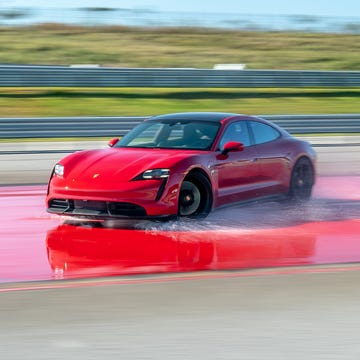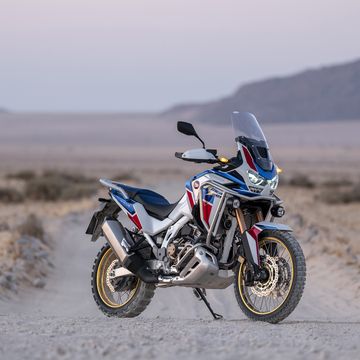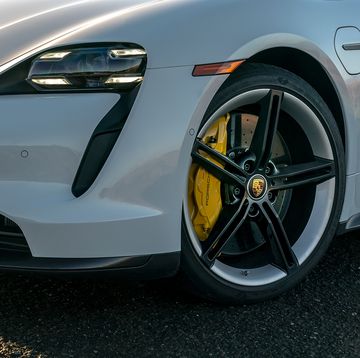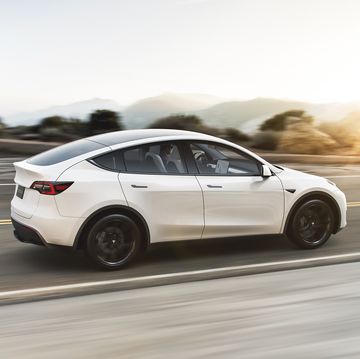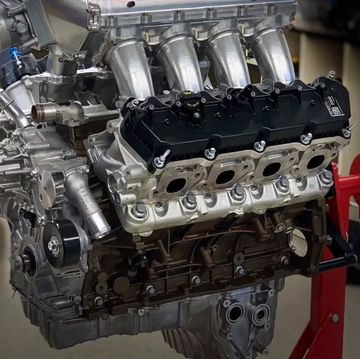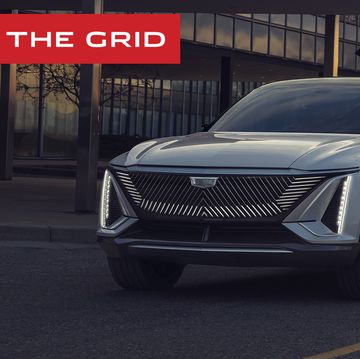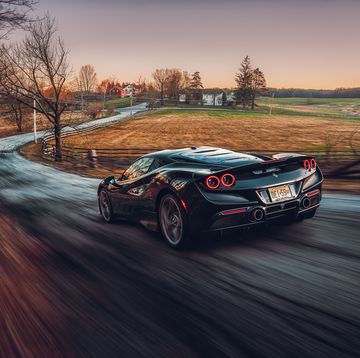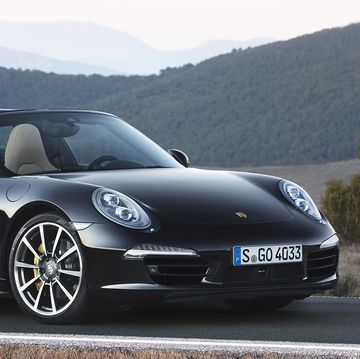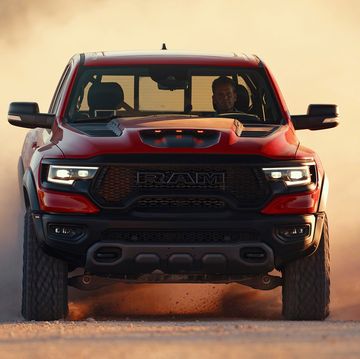Start/stop technology can mitigate this waste. Some three dozen car and truck models already available in the U.S. have start/stop systems of one sort or another. By 2015, this is expected to extend to fully 70 percent of the market, with some automakers offering it throughout their lineup.
Note, however, not all start/stop systems are created equal. Nor are they found solely in hybrid powertrains. And, at this point, each one we've sampled displays a unique character (as summarized in an accompanying table of 10 cars evaluated).
It's certainly an appropriate time to add this topic to our growing list of Technology Update automotive glossary features. For other recent ones, see "," April 2012; "," December 2011; and "," September 2011; these and others are also at roadandtrack.com.
The Basics—And Even Some History
We think of automotive self-starting as utterly routine, but of course it wasn't that way at the beginning. A giant of automotive engineering, Charles F. Kettering, and curiously enough, the cash register, played important roles in relieving motorists of the hefty—and sometimes hazardous—work of cranking an internal combustion engine. His electric starter motor on the 1912 Cadillac adopted the same reasoning that Kettering had originated at National Cash Register Co.—namely, the electric motor needed only to provide an occasional surge of power; it didn't have to be sized for constant load. To this day, automotive starters are optimized for heavily stressed but only infrequent use.
The basic idea of start/stop is simple: When the car comes to an appropriate stop, automatically turn off the engine; then seamlessly restart it when further progress is called for. However, many engineering challenges lurk in these words "appropriate," "automatically" and "seamlessly." It also depends on the type of vehicle, be it conventionally powered or of every gradation from micro to mild to full hybrid.
Traditional Starter/Battery
Four distinct start/stop configurations are currently in use. The most straightforward is a traditional starter/battery pair; for short, let's call it S/B. The basic hardware is already there; what's needed is augmented control and possible upsizing. One challenge of S/B is achieving relative transparency of operation (not a high priority in its original function). A second is durability in its more frequent use. Also, upsizing can bring problems of packaging and assembly in its particular corner of the engine compartment.
of the non-hybrid variety—our examples, the in both 6-speed manual and 8-speed automatic form—use the S/B approach for their Auto Start Stop. Though new to the U.S. market, this feature has been part of BMW's European lineup for several years now. (The rationale for this comes anon when regulatory matters are discussed.) Like other systems evaluated, BMW's Auto Start Stop has its own on/off: a separate button adjacent to the car's start-stop ignition control.
Another S/B system is the Eco Start/Stop, our example the potent . Operation of Eco Start/Stop can also be defeated through the car's Comand menu, beneath which lurks rather more autonomous logic governing start/stop operation. For example, battery requirements of steering assist and other electricals are monitored; if the engine is needed to maintain functionality, it won't shut down. Also, for safety reasons, if the hood or a door is opened, Eco Start/Stop is not activated.
BAS, As In Belt Alternator Starter
A second approach to start/stop goes by the name BAS, as in belt alternator starter. BAS start/stop exploits the inherent duality of a motor-generator in a manner similar to that of regenerative braking. (By the way, the related topic of regen deserves a Technology Update of its own—coming soon.) A traditional alternator produces electricity through being belt-driven by the engine's crankshaft. Finessed over to its motor function, a BAS counterpart restarts the engine through this same belt drive. Even with an upsized alternator and drive belt, packaging and assembly are considered straightforward. A higher voltage battery may be employed; a conventional starter is typically retained for cold start.
GM adopted BAS in its 2007 Saturn Vue Green Line microhybrid. A second generation has a larger motor-generator and 115-volt lithium-ion battery pack. This eAssist is on the in our sample as well as the 2013 and Eco. It features regen braking as well as start/stop and a modicum of propulsion enhancement.
Planetary, As in Prius
The other two approaches in our sample are hybrid-specific and, indeed, depend on configuration of the hybrid drivetrain. The most familiar of these, as exemplified by Toyota's Synergy Drive, employs two electric motors and a planetary gearbox, the combination yielding a continuously variable-like transmission of torque. As with BAS, restart capability exploits duality of a motor-generator.
The in our sample provided experience with this planetary approach. It proved exemplary of Toyota's expertise in hybrids. In particular, its start/stop was unobtrusive, the latter recognizable only through the car's several choices of energy display. As with other planetary systems, restarts had only the slightest of gravelly gear sensations.
Inline, AKA Pre-transmission, Née IMA
The fourth start/stop approach is hybrid-specific at this point, though there's nothing intrinsically prohibiting a non-hybrid application. In fact, the idea of incorporating a starter directly into the driveline isn't new. The Dynastart was a starter-generator of an earlier era.
Honda's Integrated Motor Assist was the first of this Inline hybrid configuration. With IMA, the car's motor-generator resides in place of an engine flywheel. It acts as a starter in IMA start/stop mode as well as otherwise adding to hybrid propulsion. Our sample included a pair of Honda CR-Zs, a CVT automatic as well as our .
Other more complex Inline configurations have been termed "P2" or "Pre-transmission" systems. Conceptually, their significant difference from IMA is the incorporation of an added clutch between the engine and motor-generator. (Note this allows full engine disconnect/shutdown—not merely power-off reciprocation—in hybrid electric mode.) All Inline systems operate in similar fashion when performing their start/stop function, their powertrain's integrated motor-generator handling the restart.
Our Inline sample of cars was particularly broad, ranging from the Honda CR-Z pair through an to the lofty ($95,000) . Allied with its start/stop feature, the Porsche also has a function called "sailing"—at any speed up to 103 mph, accelerator liftoff shuts down the engine for as long as power isn't summoned.
| A SAMPLING OF START/STOPS | |||||
| Car | Type1 | Restart Type2 | Stop3 | Restart3 | Remarks |
|---|---|---|---|---|---|
| BMW 328i | |||||
| automatic | Conv | S/B | C+ | C | Some noticeable throbbing |
| manual | Conv | S/B | C | D | Distinct throbs, stop and restart |
| Buick LaCrosse | Micro | BAS | A | A | Well nigh transparent in either action |
| Honda CR-Z | |||||
| CVT automatic | Mild | IMA | A | A- | Slight restart nudge |
| manual | Mild | IMA | A | B+ | Full confidence on all restarts? |
| Infiniti M35 Hybrid | Full | Pre-trans | B+ | A | Slight rev overrun on stop |
| Kia Rio Eco | Conv | BAS | B+ | B | Slight vibration, especially on restart |
| Mercedes-Benz | |||||
| CL63 AMG | Conv | S/B | A | A | Autonomous logic lurking beyond on/off |
| Porsche | |||||
| Panamera S Hybrid | Full | Pre-trans | A | A | Stops readily for "sailing" |
| Toyota Prius C | Full | Planetary | A | A | Slightest of planetary "gravel" on restart |
| 1. Conv = non-hybrid. Micro = start/stop, regenerative braking, slight if any propulsion benefit. Mild = hybrid with modest EV interaction. Full = hybrid with significant EV propulsion. 2. S/B = traditional starter/battery. BAS = belt alternator starter. IMA = Honda Integrated Motor Assist. Pre-trans = IMA-like Inline configuration, but with clutch between engine and electric motor. Planetary = epicyclic gearbox with two motors, e.g., Toyota Synergy Drive. 3. Stop and restart behaviors graded in terms of smoothness, predictability, confidence. Grades assigned: A seamless, B almost so, C noticeable but acceptable, D distracting. | |||||
How To Activate Start/Stop
Start/stop activation depends on specific driver inputs as well as operating conditions. The engine must have reached proper temperature; this, to get adequate light-off of its catalytic converter and also to ensure proper lubrication and as effortless a restart as possible.
With a manual-gearbox car, engine shutdown typically comes with braking to a complete stop, gearbox in neutral and clutch release. The Honda system anticipates this just a tad; its engine shutting down even before a full stop. Both manual-gearbox cars in our sample, the BMW 328i and Honda CR-Z, restarted with the next depression of the clutch and selection of gear.
Cars with automatic transmissions shut down upon braking to a full stop. There's typically a slight delay to account, for instance, for a stop sign or other brief pause. Restart comes with releasing the brake pedal.
How Does It Feel?
Driving a start/stop car for the first time can be unnerving. Obviously, confidence of restart is an absolute necessity. Indeed, at one time or another, several of us have inexplicably tricked our Long-Term Honda's restart logic into less than exemplary behavior. With experience, though, comes enhanced confidence. And with the best of the systems evaluated—those earning A grades—operation is well nigh transparent.
Also, curiously, we found no particular grade correlation with system complexity. The Buick's eAssist BAS equaled the Porsche S Hybrid's pre-transmission in smoothness, predictability and confidence. If anything, it's a matter of evolving goodness: The oldest—and most conventional—system, BMW's S/B, was the least impressive.
What Are Start/Stop's Benefits?
Once the catalytic converter is hot and the engine is at operating temperature, start/stop is clearly beneficial to clean air. Its benefits in fuel economy are estimated at around 5 percent, obviously depending profoundly on the amount of idling time. There's enhanced payoff, 10 percent and beyond, for in-motion applications such as Porsche's sailing feature.
Europeans got start/stop first. This was because of differences in regulations, specifically Euro versus EPA Driving Cycles. Cars running the NEDC (New European Driving Cycle) spend fully 25 percent of their time at idle. By contrast, our EPA Highway test has no stops whatsoever; our EPA City test has 11 stops, albeit many of them only brief ones. EPA's Combined mpg figure is a 55/45 weighting of City and Highway, respectively. It's figured that the stops in the City cycle result in a combined City/Hwy idle time of 11 percent. Thus, purely from a regulatory point of view, start/stop technology offers more than twice the payoff in Europe.
There's another matter of test procedure, namely how the idling is handled with manual-equipped cars. If the test driver fails to release the clutch in neutral during a simulated stop, the systems we evaluated won't be invoked—and there'll be no benefit whatsoever. It seems absurd for drivers to "ride the clutch" in this way, but regulations have been known to breed such unintended consequences.
Start/stop Tidbits
What about accelerated engine wear? Isn't starting the most difficult time for an engine? Yes, if it's cold and particularly before full lubrication is achieved. However, engineers note, start/stop isn't activated until full warmup.
What about wearing out the starter or battery? The Kettering cash register analogy may be a bit weaker; but Boss Kettering, as he was known, would no doubt have thrived on these engineering challenges. Typically, S/B systems fit beefier hardware; the Bosch Smart Starter Motor, for example. There's also potential for enhanced energy storage: ultracapacitors being one concept, lead-carbon battery technology another. BMW has teamed with Axion Power investigating such a Pb-C alternative to today's AGM (absorbed glass mat) battery. Its current Auto Start Stop continues with the latter technology.
What's to be done with the auxiliaries, for instance, climate control in either heating or cooling mode, when the engine shuts down? As most real-world stops are relatively brief, heating isn't a problem—but air conditioning could be. A particularly neat approach is thermal storage material, essentially a dual-phase substance incorporated into the a/c's evaporator unit. (See "Tech Tidbits," November 2011, or roadandtrack.com for details.) Other auxiliaries, water pumps, steering power assists and the like, have already gained efficiency through electrification.
As a last tidbit, what about diesel start/stop? Inherently, compression ignition is a difficult combustion to tame, its startups and shut downs inherently raucous. Increasing the frequency of starts/stops and striving to make them all but transparent are challenges, even with today's sophisticated diesels.
On the other hand, fuel taxation in much of the EU benefits the diesel. European drivers—and plenty of others—respond with genuine enthusiasm for compression ignition. Given that engineers around the world are working all out for reduced fuel consumption, these challenges to start/stop technology aren't being ignored.


